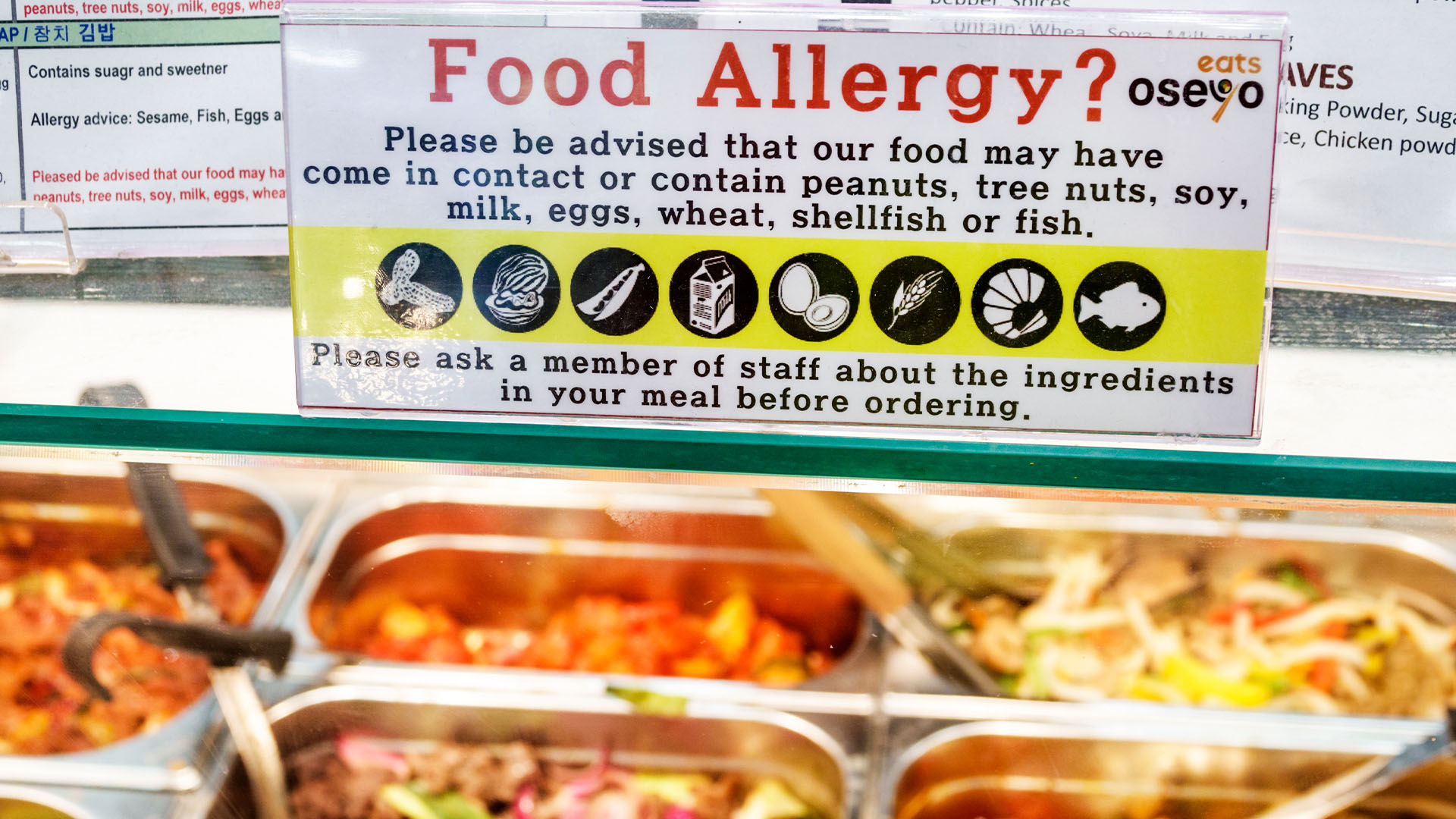
People with severe allergies to foods like milk, peanuts and shellfish will have a new way to ward off dangerous reactions after accidental exposure to the foods.
A drug called Xolair (generic name omalizumab) has just been approved for the treatment of multiple severe food allergies, the U.S. Food and Drug Administration (FDA) announced Friday (Feb. 16). The injectable drug is a monoclonal antibody, meaning it contains lab-made proteins that latch on to a specific target in the body. Once inside a person, Xolair grabs hold of immunoglobulin E (IgE), the type of body-made antibody primarily responsible for allergic reactions.
Many food allergies are driven by IgE, including those to milk, eggs, soy, peanuts, tree nuts, fish, shellfish and wheat. (IgE-driven wheat allergy is different from celiac disease, an autoimmune condition driven by other elements of the immune system.)
Xolair was previously approved to treat other conditions, including allergic asthma, but its newest approval means it can now be used to guard against allergic reactions caused by multiple food triggers.
"This newly approved use for Xolair will provide a treatment option to reduce the risk of harmful allergic reactions among certain patients with IgE-mediated food allergies," Dr. Kelly Stone, associate director of the Division of Pulmonology, Allergy, and Critical Care in the FDA's Center for Drug Evaluation and Research, said in Friday's statement.
Related: What do some allergies last a lifetime? Newly described immune cells to blame
"While it will not eliminate food allergies or allow patients to consume food allergens freely, its repeated use will help reduce the health impact if accidental exposure occurs," Stone said.
Importantly, Xolair is not a replacement for epinephrine injections — namely, EpiPen devices, which are used to reverse a life-threatening, body-wide allergic reaction called anaphylaxis. The EpiPen injection keeps a person's airways open and blood pressure stabilized in the event they have exposure to an allergen and have this dangerous reaction.
Xolair, by contrast, is injected every two to four weeks as a preventive measure to help people build tolerance to allergens and thus reduce the severity of their allergic reactions if they are exposed.
The recommended dosage and timing of a person's Xolair injections vary depending on their body weight and the amount of IgE in their blood, according to the drug's distributor, Genentech. The injections can be given by a health care provider or at home through self-injection, if a clinician deems that method appropriate for the patient.
Xolair was tested in a trial that included nearly 170 adults and children at least 1 year old, according to the FDA. All of the participants were allergic to peanuts and at least two additional foods; these allergies were confirmed with various tests, including a skin-prick test and IgE test. The participants received either Xolair or a placebo for four to five months.
The researchers found that 68% of those who received Xolair were able to consume a dose of peanut protein without moderate to severe symptoms, such as whole-body hives or vomiting. That's compared with only 6% of the placebo group. The researchers also saw similar rates of improvement when it came to people's reactions to cashews, milk and eggs.
That said, a significant percentage of people who took Xolair — 17% — saw no change in their peanut tolerance over time. "As a result, continuation of strict allergen avoidance is still necessary, despite treatment with Xolair," the FDA cautioned.
The most common side effects of the injection were fever and reactions at the injection site. The drug's label also warns of potential fevers, joint pain, rashes and parasitic worm infections. (IgE is thought to be key to fighting off parasites, so blocking the antibodies might raise the risk of such infections.)
In addition, the FDA emphasized that people should initially receive Xolair in a health care setting, as there have been some reported cases of patients experiencing anaphylaxis shortly after the drug's administration.
Xolair was previously prescribed "off-label" for food allergies but should now be easier to access for the purpose, The Associated Press reported. The list price typically runs $2,900 a month for children to $5,000 a month for adults, but insured patients generally pay less out of pocket.
This article is for informational purposes only and is not meant to offer medical advice.
Ever wonder why some people build muscle more easily than others or why freckles come out in the sun? Send us your questions about how the human body works to community@livescience.com with the subject line "Health Desk Q," and you may see your question answered on the website!







